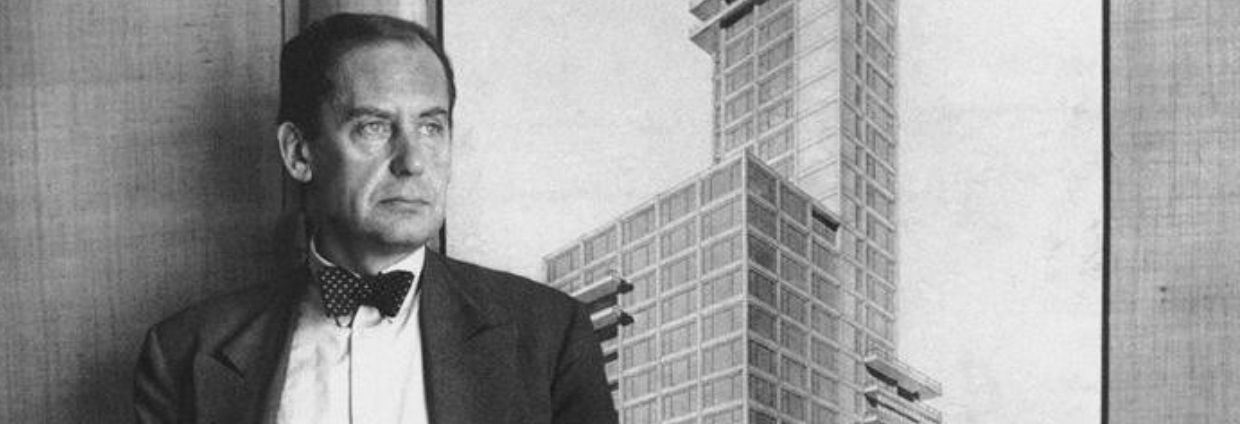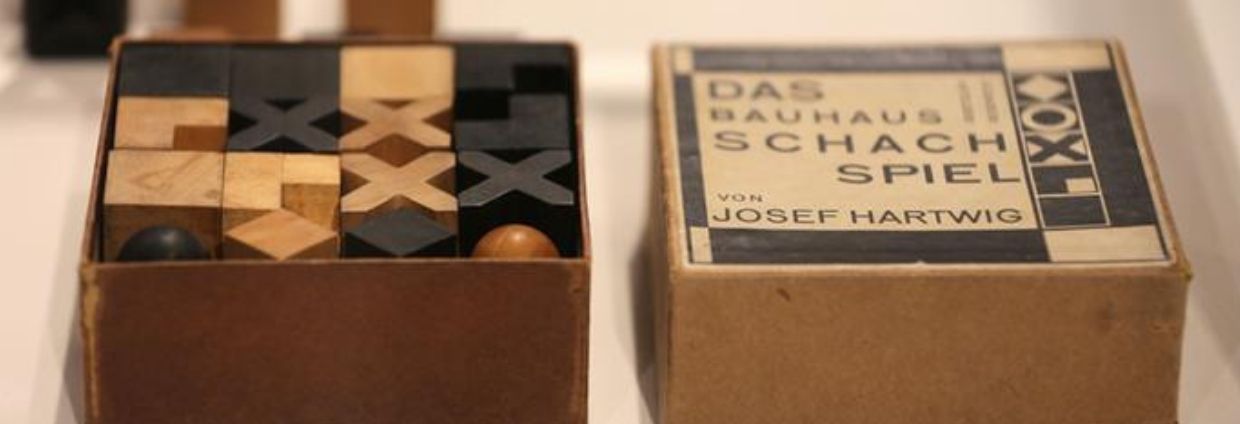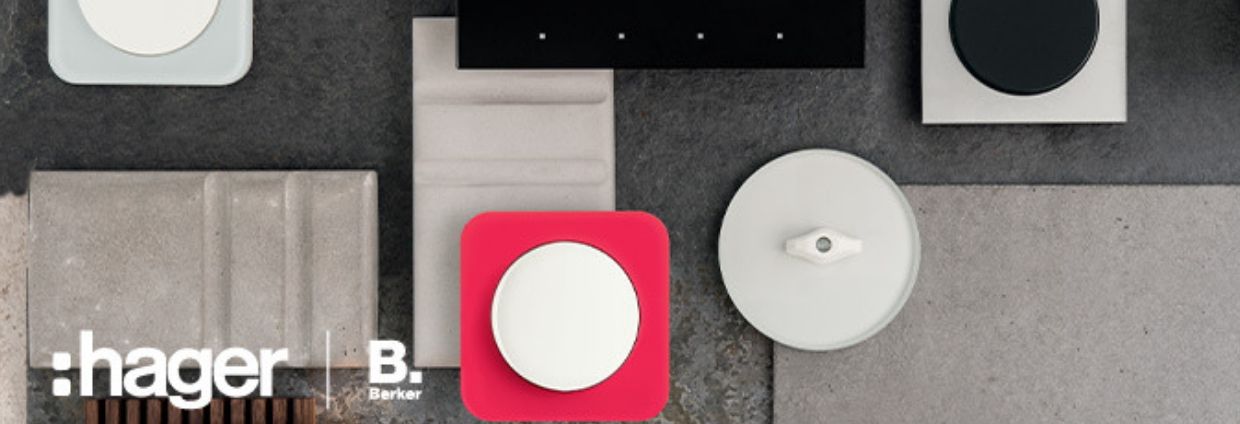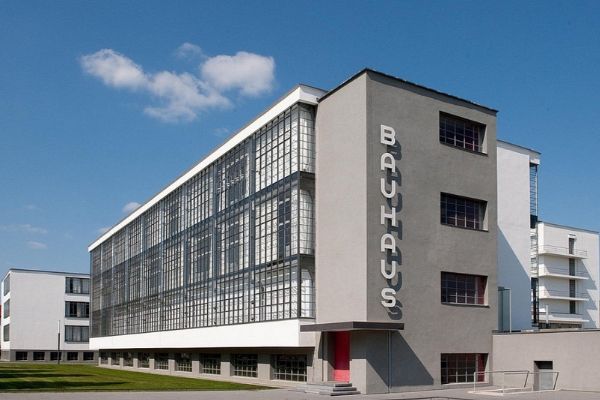100 years of Bauhaus architecture
The Bauhaus architectural style is 100 years old and this thread is strongly intertwined with the Berker manufactory, as both celebrate their 100th anniversary this year. The founder of the Bauhaus, architect Walter Gropius, used the sophisticated Berker switches in his work and buildings from the very beginning. In April 1919, Walter Gropius founded the Bauhaus, one of the most influential schools of architecture and art in Germany. Although it was an art school in the city of Weimar, and surprisingly, architecture was not taught there until 1927. Instead of drawing human figures and still life, students were taught to look at the world around them from a completely different perspective. Teachers favoured strong colours and bold shapes, and students were taught to focus on simplicity and functionality.

Bauhaus means "to build houses" but Walter Gropius did not just want to create buildings, he wanted to create a new art form. Students at the school also studied ceramics, bookbinding, typography and advertising. Gropius told the students, "An object is defined by its nature. In order for a design to be successful, we must first examine its nature. In order to serve its purpose perfectly, its subsequent function must be studied with a practical eye. ' Students were not even given lectures on art, but were inspired to create something tangible and were therefore assigned to workshops.
The results exceeded all expectations.
The Bauhaus produced an incredible variety of art objects, from square-shaped lamps to chess sets. All of these objects had a practical function. They were both simple and useful, and it was this simplicity that made them both elegant and beautiful.

The school was operating in the spirit of the vision and the power, after the First World War, watched this bubbling beehive with concern. In 1933, after Hitler came to power, the Nazis closed the school and the teachers and students scattered, taking the ideas the school preached to the world. From then on, the Bauhaus school changed everything in the world, from the shape of furniture to graphic design, but its greatest legacy was the Bauhaus architectural style. In Tel Aviv there are nearly 4,000 buildings that were built in the spirit of Bauhaus architecture in the 1930s. These buildings were built by German Jewish immigrants in the Bauhaus spirit, in large part by students who were forced to leave after the school closed.
This group of buildings, known as the "White City", was declared a World Heritage Site by Unesco in 2003.

Another fundamental principle of the Bauhaus school was that "form follows function". This famous phrase was first used by the American architect Louis Sullivan. It means that in the design of objects, form should be applied in such a way that function is paramount and always takes precedence over aesthetics. Every object is functional, the result is astonishing, strange at first glance, but always fascinating.
Main characteristics of the Bauhaus architectural style
A house built in the Bauhaus style usually has a flat roof.
- It is characterised by a "glass curtain" façade, very often with corner windows.
- The main supporting columns of the house are inside the house, so this Bauhaus architectural style allows for much larger glass surfaces than before.
- The Bauhaus architectural style, with its typical colours of red, yellow and blue, used alongside black and white.
- The furniture is constructed from geometric shapes. For example, chairs made of rectangular squares or triangles were used.
- New materials have also been introduced on furniture, such as steel tubes. Chrome and aluminium were also used for lamps.
- A lot of steel was also used for houses. They built structures of steel or reinforced concrete. Then came the facade, which was most often made of glass.
- For aesthetics, no materials have been modified or hidden. There was no need to make the materials used in the buildings invisible. This left visible the steel or beam support columns.
- The architecture and design reflect a minimalist style, with a preference for geometric shapes.
- Straight lines, shapes and colours were all that mattered, nothing else was needed, so they reduced any distractions or complications in favour of functionality.
Bauhaus founder Walter Gropius, the architect, used Berker switches in his work from the very beginning, and this was no coincidence, as the Berker brothers were also concerned with simplicity, functionality and high quality. Berker switches and systems can be found in the most beautiful buildings in the world. This can happen because they were designed with the Bauhaus style in mind.
A timeless, functional and durable material.

So not only was it obvious to architect Walter Gropius, but many architects have used and continue to use Berker's timeless, durable and functional products in their work to this day. Since 2010 the traditional Berker brand has been part of the Hager company. The brand combines today's established values of contemporary design with modern technological needs. It continues to work on creating new standards where form, function, usability and quality are the primary considerations. So it's no coincidence that the history of Bauhaus art and the Berker switch family are contemporaries, as both created something lasting, exactly a century ago. Berker switches can be found in many Bauhaus-style buildings, as one of their greatest advantages is that they have a wide palette, from classic to modern design, which can be integrated into any interior. The revolutionary Bauhaus movement changed art, design and architecture forever. Although it was a building of architects, craftsmen and artists that existed only from 1919 to 1933, the Bauhaus style left a lasting legacy in the world of art, architecture and design. To most people, Bauhaus stands for a modern architectural style, but Bauhaus is much more than that. It was a new way of thinking that was born 100 years ago, at the end of the First World War, and the ideas that emerged then have come to define most of the arts today.
For the complete range of Berker switches, please visit Berker.hu.
Related post: A Berker 100 éves, az igényes kapcsolócsalád, 1919 óta a piacon

